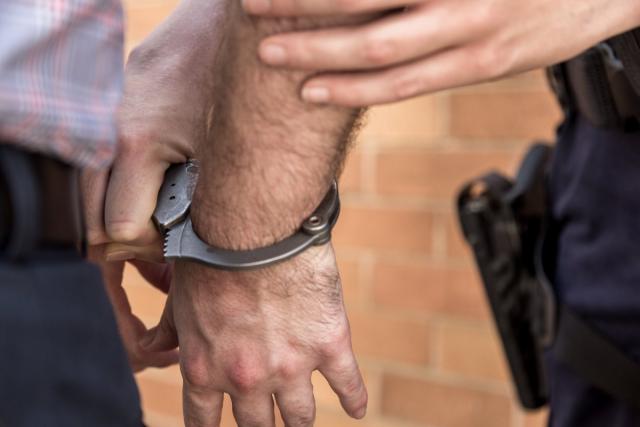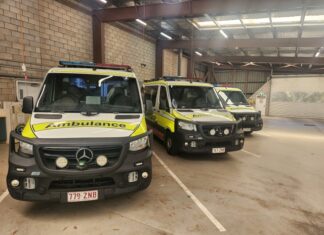For years, Peter Koenig stuck to a story that Bruce Saunders’ woodchipper death was an industrial accident, a court has heard.
However, Koenig has been accused of lying to “save his own skin“ by telling police just months ago that Gregory Lee Roser was to blame.
Roser, 63, and Sharon Graham, 61, have pleaded not guilty to murder after Mr Saunders died while working on a property north of Brisbane in November 2017.
The Crown alleges Graham asked Roser and another lover Koenig to kill her ex-partner Mr Saunders, 54, and make it look like an accident in a bid to claim his $750,000 life insurance.
Footage has been shown to the jury of Mr Saunders’ legs protruding from the chipper at the Goomboorian property near Gympie after clearing trees with Roser and Koenig.
Defence barrister Lars Falcongreen said Roser “shamefully“ assisted moving the body but accused Koenig of killing Mr Saunders.
Koenig first told police Mr Saunders had fallen into the chipper, Mr Falcongreen told the Brisbane Supreme Court jury.
However, in June this year Koenig told police Roser was the killer and his own charge was reduced from murder to accessory after the fact.
“(Koenig) was highly personally motivated to lie to the police to save his own skin,“ Mr Falcongreen said.
“It’s harder to imagine a clearer motivation than that.“
Mr Falcongreen said the court had heard “star witness“ Koenig had helped move the body, fed it into the chipper and stopped the machine with the legs protruding to make it look more like an accident.
The court also heard that Koenig had brushed the area with a branch after the death and not only owned but removed a metal bar that he claimed Roser used to kill Mr Saunders.
“You might think that this is a pretty impressive list of activities for an unwilling participant,“ Mr Falcongreen said.
“You may well think he did these tasks because in fact he actually was the killer.“
Mr Falcongreen said Roser did not dispute that he lied to police, friends and neighbours by telling them the death was an industrial accident.
However, he claimed Roser did not tell the truth because he was afraid of Koenig and may “end up like Bruce“.
The defence barrister said Roser later did not tell police because he felt trapped and may have also remained with the “manipulative“ Graham because he was “tragically lonely“.
Graham has successfully applied for a separate trial.
Crown prosecutor David Meredith said Graham was the “ring master“ but Roser was an “eager participant“.
“The prosecution and defence both say there is no question that Bruce Saunders was murdered, the only issue is who killed him,“ he said.
Koenig was a more reliable witness while Roser got details wrong “because they are not the truth“, Mr Meredith said.
He said Roser was involved from the beginning in Graham’s initial plans to kill Mr Saunders at his Nambour house and then on his way or near his workplace, at one stage borrowing Koenig’s handgun.
He said Roser then “goes to some trouble“ to collect the chipper, knowing it has to be used to make the death look like an accident.
After Mr Saunders’ death, Mr Meredith said Roser takes the lead – not Koenig – by telling the property owner and the police that it was an accident.
Later Roser can be heard whispering with Graham in police recorded conversations agreeing that “Koenig could hurt him more than he could hurt Koenig“, he said.
“The truth is although Koenig takes part (in disposing of the body) … his actions are of less seriousness than Roser because Roser is the one who has actually done the killing,“ Mr Meredith said.







